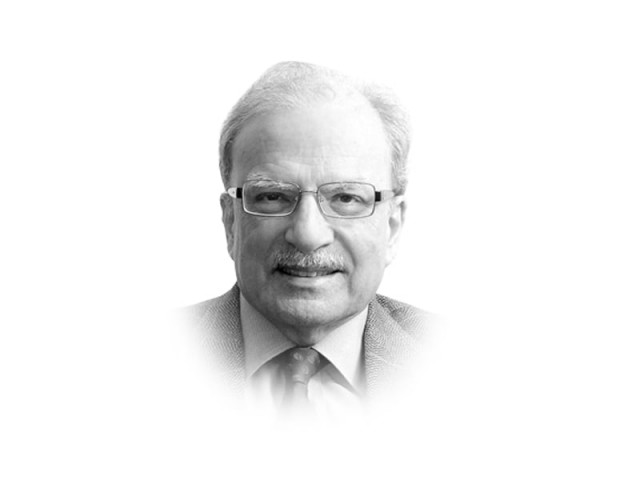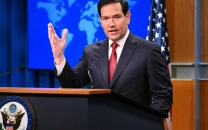The state’s role in alleviating poverty
It is only twice in Pakistan’s 70-plus years of history that the state directly intervened to help the poor

What is the role of the state in alleviating poverty; particularly in its absolutist forms? This question has been asked for ages but no definite answer has been provided. Some answers have been found in both the developed and developing parts of the world. Today, I will take up the state’s role in three countries: Pakistan, the United States and China.
It is only twice in Pakistan’s 70-plus years of history that the state directly intervened to help the poor. The first effort was made in the 1960s when president Muhammad Ayub Khan, Pakistan’s first military ruler, introduced what came to be known as the system of Basic Democracies. The lowest rung of this multi-tiered system was made up of unions councils whose members were directly elected by the people. There were 4,000 of these councils in East and West Pakistan, each with 10 elected members. This meant that what is now Pakistan had 40,000 directly elected people. Pakistan’s population then was 60 million people, each elected “union councilor” represented 1,500 people or 300 households. At that time about 20 million were absolutely poor.
The main task assigned to the union councils was to develop the geographic areas for which they had responsibility. The councils were provided rural works funds for implementing small projects that would affect the lives of the people. They could choose projects from four activities: primary education, primary healthcare, roads connecting farms with local market towns, and community centres. I was the second director of the West Pakistan Rural Works Program and travelled the province to watch and evaluate the projects that were being implemented. I gathered a great deal of information and data concerning the programme and used it to write a long paper which was published by a Harvard University journal when I went to the university for graduate studies in Economics. I estimated that in the two-year period I ran the programme, the number of those living in poverty was reduced by five to seven million. There was a longer-term positive impact of the programme as well since schools and clinics became available at reasonable distances for most people.
The second time the Pakistani state got directly involved in alleviating poverty was during the early years of the tenure of Prime Minister Imran Khan who was elected in July 2018. He launched the Ehsaas programme on March 27, 2020, aimed at providing cash transfers to those who were “extremely poor”. Focus of the programme was on women, orphans, the jobless, homeless, and the ill. In his statement announcing the programme’s launch, the PM said his aim was the creation of a welfare state “by countering elite capture”. The programme managers would use 21st century tools “such as data and technology to create efficient safety nets”.
Turning now to the US and China, the world’s two largest economies, it should be noted that they are managing their economic systems in very different ways. According to the US thinking, the individual is responsible for managing himself or herself in the economy. The state steps in only during moments of extreme distress. That happened when president Franklin Roosevelt introduced a number of state-managed programmes that came to be called the New Deal. They provided jobs to the unemployed by the launch of a number of state-funded programmes. Roosevelt also introduced the system of social security that provided small amounts of money to the elderly once they could no longer be productively employed. However, the New Deal was resisted by conservative elements in the society.
Conservative opposition to any kind of state involvement in the social programme resurfaced when president Obama began working on the passage of the Affordable Care Act (ACA), or “Obamacare”. Its primary purpose was to provide coverage to people who were not enrolled in healthcare programmes. Some of those who were excluded were because of pre-existing conditions, meaning only the healthy would be able to insure themselves against future illnesses. Also not covered were children of those who were insured. The struggle to get the ACA passed by Congress is described in detail by president Obama in A Promised Land, the first volume of his account of his eight years in the White House. He writes: “The Tea Party had accomplished what it had set out to do, generating reams of negative publicity for our efforts, stoking public fear that the reform would be too costly, too disruptive, or would help only the poor.” The Tea Party was led by members of the Republican Party who were against the state’s involvement in most parts of the economy. This was the element of the party that came to be known as the “Trump base”.
To understand where China is today, we need to look back into the country’s history — not all the way back when a string of dynasties governed the country — but to the middle of the 20th century. It was then that the Communist Party of China, after a bitterly fought civil war, took control of the country and became the second largest state to adopt communism as the governing ideology. The Soviet Union was the other one.
In 1978, two years before Deng Xiaoping’s reforms and his proclamation that it was glorious to be rich, nearly 98% of those in the countryside lived in extreme poverty. By 2016, the proportion was down to less than 5%. With a population of 1.4 billion — by far the largest in the world — even a low rate of 5% meant that 70 million Chinese were absolutely poor.
China initially accepted the World Bank’s definition of absolute poverty to be those with per capita income of $1.9 a day. But as the country developed, it has continued to raise the poverty line and now uses $2.3 a day as the threshold. Most of the poor are in the countryside. President Xi Jinping has launched an ambitious programme to bring down the number of people who are still poor to well below 10 million. If that goal is realised, the proportion of poor would have declined to below 1% of the population. The Xi approach combines state help with encouragement to state-owned enterprises as well as the private sector to work with the poor. His government has designated 832 counties — about 30% of the total — as the focus of the poverty eradication plan. Early in December 2020, China announced it had eradicated extreme poverty. By World Bank estimates, some 800 million people in China have escaped penury in the past four decades, from 1980 to 2020. Never before in the country’s history has poverty come anywhere near to being totally eliminated.
The conclusion I would draw from this brief analysis of how three countries with different political systems have worked to reduce the incidence of poverty is that the state has to play a role. High rates of economic growth would not do; the state has to get actively involved in addressing the problem by directly aiding the poor.
Published in The Express Tribune, January 11th, 2021.
Like Opinion & Editorial on Facebook, follow @ETOpEd on Twitter to receive all updates on all our daily pieces.















COMMENTS
Comments are moderated and generally will be posted if they are on-topic and not abusive.
For more information, please see our Comments FAQ